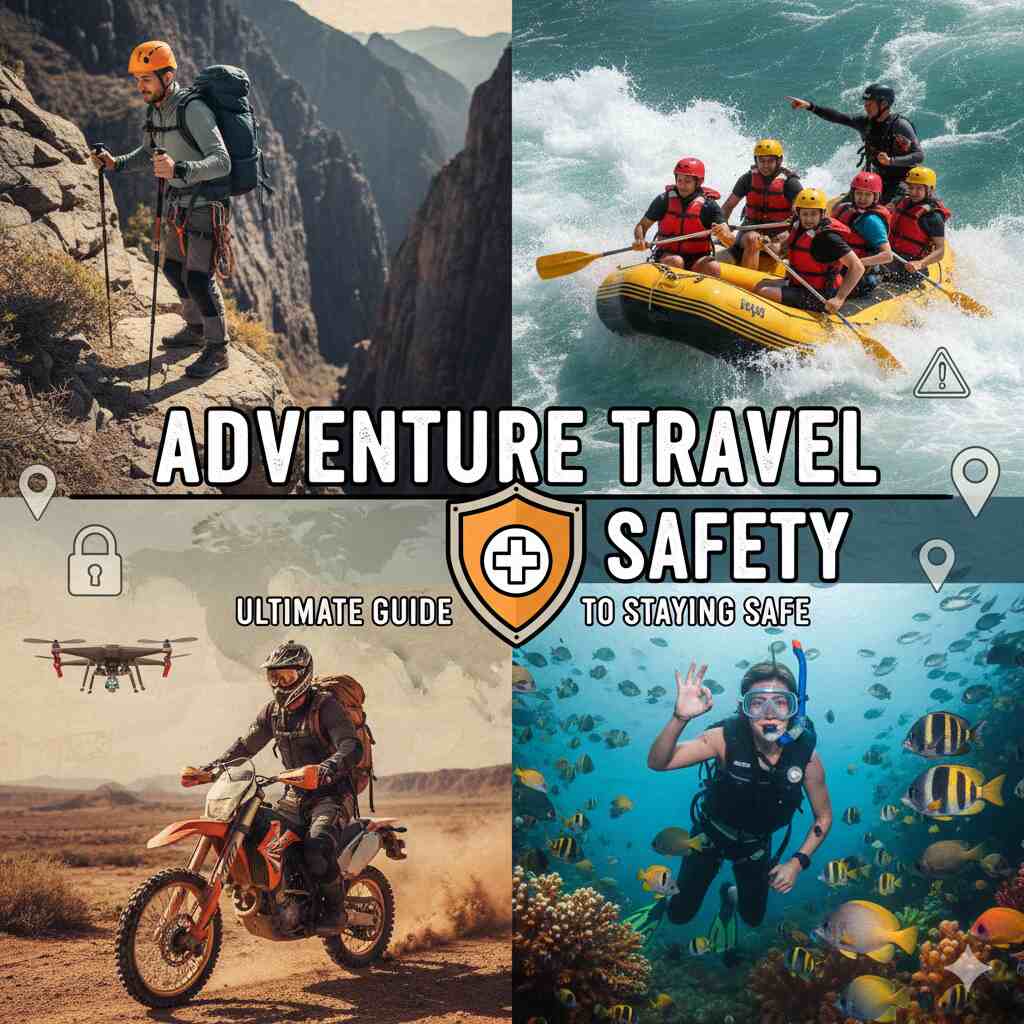Adventure travel is exhilarating. Whether you’re trekking through the Himalayas, diving in the Great Barrier Reef or zip-lining through Costa Rican rainforests, the thrill of the unknown is what makes it so appealing. But with great adventure comes great responsibility—especially when it comes to safety.
In this comprehensive guide, we’ll explore everything you need to know about adventure travel safety, from pre-trip planning to on-the-ground precautions. Whether you’re a seasoned explorer or a first-time adventurer, these tips will help you stay safe while embracing the wild.
Why Adventure Travel Safety Matters
Adventure travel often takes you off the beaten path. Unlike traditional vacations, it involves physical challenges, remote locations and unpredictable environments. That’s why safety isn’t just a consideration—it’s a necessity.
Neglecting safety can lead to injuries, illnesses or even life-threatening situations. However, with proper preparation and the right mindset, you can minimize risks and maximize enjoyment.
Pre-Trip Planning: The Foundation of Safety
Before you even pack your bags, take several steps to ensure a safe adventure.
1. Research Your Destination Thoroughly
Understand the terrain, climate, political stability and health risks of the area you’re visiting. Look into local customs, laws and emergency services. Knowing what to expect helps you prepare for the unexpected.
2. Get the Right Vaccinations and Health Checks
Visit a travel clinic at least six weeks before departure. Depending on your destination, you may need vaccines for yellow fever, typhoid, hepatitis or malaria prophylaxis.
3. Purchase Comprehensive Travel Insurance
Ensure your policy covers adventure activities, such as scuba diving, mountaineering or skiing. Read the fine print—some policies exclude high-risk sports.
4. Share Your Itinerary
Always leave a copy of your travel plans with a trusted friend or family member. Include contact details, accommodation info and expected return dates.
Packing Smart: Gear Up for Safety
What you pack can make or break your trip—especially when it comes to safety gear.
Essentials to Include:
- First-aid kit with bandages, antiseptics and medications
- Water purification tablets or a portable filter
- Multi-tool or Swiss Army knife
- Flashlight with extra batteries
- Emergency whistle
- Satellite phone or GPS tracker (for remote areas)
- Weather-appropriate clothing and sturdy footwear
Don’t forget to pack copies of essential documents, such as your passport, insurance information and emergency contact details.
On-the-Ground Safety: Staying Alert and Prepared
Once you’re on your adventure, staying safe means being proactive and aware.
1. Stay Hydrated and Nourished
Dehydration and fatigue are common in adventure travel. Carry enough water and high-energy snacks. Avoid drinking untreated water.
2. Respect Local Guidelines and Nature
Follow trail markers, obey park rules and refrain from disturbing wildlife. Nature is beautiful—but it can be dangerous if disrespected.
3. Know Your Limits
Don’t push yourself beyond your physical or mental capacity. If you’re tired, rest. If the weather turns, seek shelter. Adventure is not a competition.
4. Use Licensed Guides and Operators
Whether you’re rafting or rock climbing, choose certified professionals. They are familiar with the terrain and have the training to handle emergencies.
Tech and Tools: Modern Safety Enhancers
Technology can be a lifesaver—literally.
Recommended Tools:
- Offline maps and navigation apps like Gaia GPS or Maps.me
- Translation apps for communication in foreign languages
- Emergency alert apps like bSafe or Red Panic Button
- Wearable fitness trackers to monitor vitals
Always keep your devices charged and carry a power bank.
Mental Safety: Staying Calm and Focused
Adventure travel isn’t just physically demanding—it can also be mentally taxing.
Tips for Mental Well-being:
- Practice mindfulness or meditation to stay grounded
- Take breaks to avoid burnout
- Stay connected with loved ones
- Trust your instincts—if something feels off, it probably is
Common Adventure Travel Risks and How to Avoid Them
Here are some typical hazards and how to mitigate them:
| Risk | Prevention |
| Altitude sickness | Acclimatize slowly, stay hydrated |
| Animal attacks | Keep distance, avoid feeding wildlife |
| Getting lost | Use GPS, stick to marked trails |
| Injuries | Wear protective gear, warm up before activities |
| Theft | Use anti-theft backpacks, avoid flashing valuables |
Real-Life Stories: Lessons from the Trail
- Emma’s Himalayan Trek: She ignored signs of altitude sickness and had to be airlifted. Lesson? Listen to your body.
- Jake’s Jungle Adventure: He wandered off the trail and got lost for 12 hours. Lesson? Stick with your group and carry a GPS.
These stories aren’t meant to scare—they’re intended to prepare.
Final Thoughts: Embrace Adventure, But Stay Safe
Adventure travel is one of the most rewarding ways to experience the world. It challenges you, inspires you and connects you with nature and cultures in profound ways. But none of that matters if you’re not safe.
By prioritizing adventure travel safety, you ensure that your journey is not only thrilling but also secure and memorable for all the right reasons.
Frequently Asked Questions (FAQ)
Q1: Is travel insurance necessary for adventure travel?
A: Absolutely. Ensure it covers high-risk activities and emergency evacuation procedures.
Q2: What should I do if I get injured in a remote area?
A: Use your first-aid kit, contact emergency services via satellite phone and stay calm until help arrives.
Q3: How can I avoid altitude sickness?
A: Ascend gradually, hydrate well and consider medication like acetazolamide.
Q4: Are solo adventure trips safe?
A: They can be, with proper planning, communication and awareness. Always inform someone of your whereabouts.
Q5: What’s the best way to stay safe around wildlife?
A: Keep your distance, avoid feeding animals and follow local guidelines.

